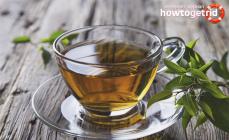Trinithium salt citric acid
Chemical properties
Sodium citrate, what is it? To figure out that such a sodium citric acid salt should be considered its structure. Chemical formula substance: Na3C6H5O7. The tool has the appearance of a white small-crystalline powder, has a salt-sour taste, there is no smell. Melts at 310 degrees Celsius. Molecular weight \u003d 258 grams per mol. The 3-substituted sodium citrate is well soluble in water, soluble in alcohols, does not dissolve in organic Rhines.
Harm and benefit
Chemical connection is actively used:
- as seasonings, spices, preservative under the code E331 , in the production of splashing of lemon, energy Drinks, desserts from gelatin, in children's nutrition;
- in the form of a buffer to maintain stable pH, as an anticoagulant, in coffee machines;
- in pharmaceutical, is part of soluble forms of drugs, for example, from;
- as a laxative, in the treatment of urinary infections;
- in analytical chemistry, when determining the EE;
- in fiber optic fluids.
Harm sodium citrate human body, as a rule, does not bring. The substance is not toxic, it does not cause irritation when entering the skin. The tool is better not to inhale. There are no cases of poisoning by this chemical compound.
pharmachologic effect
Necking, anticoagulant, restoring alkaline balance.
Pharmacodynamics and pharmacokinetics
Sodium citrate has the ability to bind calcium ions, which are 4 plasma blood coagulation factor, slow down the processes of hemokoagulation. The substance increases the concentration of sodium ions in the body, the blood is observed, changes pH urine eliminates symptoms dysuria .
Indications for use
Sodium lemon acid is used to stabilize the blood, the symptomatic treatment of diseases of the urinary tract; Add to tablets from and thymlee .
Contraindications
Substance cannot be used at.
Side effects
Sodium citrate can cause a decrease in appetite, vomiting, painful sensations in the abdomen, nausea, growth, allergic spindles.
Instructions for use (method and dosage)
Dosage and multiplicity of sodium intake of lemon acid depends on the used drug.
In the treatment, the substance takes three times a day for 48 hours. The dosage is selected individually.
Overdose
There is no information about overdose.
Interaction
The substance does not enter into medicinal interaction. It should be remembered that the tool is observing urine.
special instructions
It is impossible to repeat sodium sodium treatment courses with citrate. If after therapy symptoms are preserved, it is recommended to change the tactics of treatment.
Gross formula
C 6 H 5 Na 3 O 7Pharmacological group of substance Sodium citrate
Nonological Classification (ICD-10)
CAS code
68-04-2Characteristics of substance sodium citrate
Colorless crystals or white crystalline powder without smell, brackish taste.
Pharmacology
pharmachologic effect - Anticoagulant, leaning urine, restoring alkaline blood condition.Binds CA ++ (IV Plasma Blood Coaling Factor) and inhibits Hemokoagulation (in vitro). Increases the Na + content in the body, increases alkaline reserves of blood. Changes the urine reaction with acid on alkaline, promotes the disappearance of the symptoms of dysuria.
Application of substance sodium citrate
Blood stabilization. Symptomatic treatment of cystitis.
Contraindications
Hypersensitivity.
Restrictions on application
Hearts, kidney disease, arterial hypertension, diabetes, low salt diet, pregnancy, breastfeeding.
Side effects substance sodium citrate
Reducing appetite, nausea, vomiting, abdominal pain, increased blood pressure.
Ways of administration
Inside.
Precautions Sodium Sodium Citrate
Do not often repeat the course of treatment. If at the end of the course the symptoms of cystitis remain, you must verify the diagnosis.
In men and children, cystitis often has a bacterial nature, so the prescription of the drug this patients is not recommended.
Interactions with other active substances
Trade names
| Name | Validation of the Vyshkovsky index ® |
In the third millennium it is difficult to submit your life without the use of chemistry as science in different industries and in everyday life. This citrate from the beginning of the twentieth century has become an integral part of medicine, improving food quality, and still work some devices. Sodium citrate can be found in any refrigerator, first-aid kit, bathroom, but do you remember from the school course of chemistry, what is citrates, additive E331 and what benefit or damage do they bring?
What is sodium citrate
Sodium Citrate is a trivalent sodium salt of citric acid, known to the inhabitants as a dietary supplement E331. One of the common citrate titles is "sour salt", it appeared due to the characteristic taste. Often the connection can be found as spices, taste preservative, antioxidant, anticoagulant. The interaction of trinatry with water according to the instructions is characterized as the usual, familiar to the oxidation reaction.
Properties
Since the above-mentioned Citrate E331 is a salt, it is easily dissolved with water, but it is poorly dissolved with alcohol. Limonial sodium is two types: transparent crystals or white powder. The substance is not amenable to burning, does not have toxic properties. There are three types of citrate (Sodium Citrate):
- monosodium citrate);
- dVODIUM CITRATE;
- three-substituted (Trisodium Citrate).
Benefit and harm
The substance due to its structure is capable of oxidizing when interacting with water, oxygen. This process makes citrate absolutely harmless to the body, and since it is used only so, there is no reason for concerns. Special benefits for the body is not pure. For example, as a component of drugs citrate only affects solubility, but does not have a positive effect on human health.
The negative properties of the citrate are also a bit: when inhaling, the powder is annoying the respiratory tract, like an acidic salt, poorly interacts with ulcers, wounds and similar, unprotected top layers, areas on the body. An acceptable (permissible) daily dose of sodium citrate does not exist, but products where it is contained can be harmful if there are many of them and often.
Application of sodium citrate
Today, the substance is used in many segments of industry. The usual supplements "E" are used in food IndustryBut it is impossible to discount the role of a citrate for medical research, cosmetic industry, sports. The familiar basic component of many compositions for beauty and health, citrate is perceived as something common, but it causes hot disputes, and often even doubts.
Food additive E331
Thanks to the positive properties of the substance, the list of products whose composition is included, simply unlawed:
- Flavor additive. Used for the manufacture of many power engineers, sodes with citrus flavor.
- Acidity regulator. Added to products with gelatin base.
- Participates when sterilizing milk for the manufacture of various equal milk products.
- Is component baby food, large number of desserts.

In medicine
The substance at the beginning of the XX Art. Used the Belgian doctor Albert Hastin, who applied it as an anticoagulant when overflowing blood. The principle of operation is simple: the citrate with the help of internal processes does not give blood to roll, contributes to long-term storage. Technology still use blood banks, for freezing, storage of animal sperm cells for the purpose of selection.
It is used as a drug from cystitis, heartburn, constipation, and still helps to neutralize the hangover, prevent the formation of blood clots. Being a component of drugs, the citrate is already dissolved in the stomach, and the medium means contain a substance as a solvent capsule in water. The same effect can be observed with aspirin tablets, which must first be thrown into a glass with water. People call this reaction with pop.
In cosmetics
Sodium Citrate in cosmetics occupies far from last. For example, sodium dihydrate is a component of many shampoos. The substance can reduce the effect of an alkaline medium on the hair, make them softer, silky, and the acid helps to neutralize the fat on her hair, without leaving a soapfile. These and many other properties could not miss the manufacturers of organic cosmetics. The substance is a component of air conditioners, soap, shampoos. It is also effectively fighting with oily skin, therefore it is listed as part of many masks, creams.
Sodium citrates (Sodium Citrates, Sodium Citrate, Monosodium Citrate, Disodium Citrate, Trisodium Citrate, sodium citrate, sodium citrate Sodium single-stroke, sodium citrate Double-sufficient, sodium citrate Three-substitred, E331) - sodium citrate citric acid.
Chemical formula Na3C6H5O7.
Sodium citrate types: Sodium Citrates:
(i) sodium sodium citrate (monosodium citrate);
(ii) sodium citrate double-sufficient (Disodium Citrate);
(iii) Sodium citrate Three-substituted (Trisodium Citrate).
Sodium citrate has a medium-grained salt and sour taste. For this feature of alkaline and alkaline earth curtains (for example, sodium and calcium citrates) are known as "acidic salts" (sometimes so erroneously called citric acid).
Sodium citrate is used mainly as a spice (seasoning), which gives a special taste, or as a preservative (food additive E331).
It includes a flavor additive to the composition of carbonated drinks, many drinks with lemon or lime flavor, as well as the composition of energy drinks such as Red Bull and Bullit.
Citrate can be used as a buffer connection that prevents changing the pH.
It is used to control the acidity of some dishes, for example gelatin desserts. It is used to regulate acidity in coffee machines.
Sodium citrate appears when dissolved in water, a plurality of "instant drugs", such as Alka-Seltzer (antacid - from heartburn).
It is used to reduce discomfort in the infections of the urine-sex system such as cystitis, it reduces acidity with peripheral renal acidosis, and is also used as an osmosis regulator (laxative).
Sodium citrate in the form of a solution is one of the components of the medium to defrost animal sperm during artificial insemination.
Sodium citrate (lat. NatRii Citras) is a sodium citric acid salt, which in the food industry is used as an E331 additive as an emulsifier or stabilizer.
Chemical formula Supplements: Na 3 C 6 H 5 O 7. The most popular today is the 2-water sodium citrate, which has a large concentration of the main substance and perfectly leaving long-term storage.
In view of this additive - crystalline powder white colorwhich is easily dissolved in water, but weakly soluble in alcohol. The powder does not have flammable and explosive properties, as well as non-toxic and does not irritate the skin, but when inhalation may irritate the upper respiratory tract.
For the first time, sodium citrate was used in 1914 in the process of blood transfusion as an anticoagulant. Later, the addition began to use in the food industry in the form of a solution.
Today, sodium citrate on an industrial scale is obtained by neutralizing citric acid source of sodium (for example, caustic soda) and subsequent crystallization.
Due to the fact that sodium citrate has a specific sour salt-salty taste, the E331 additive is applied to improve taste quality Products in the form of seasoning. Also for this feature of the E331 is called "acid salt", to the category of which the lemon acid itself is erroneously.
Another sodium citrate function is to control the acidity of a number of dishes (in particular desserts based on gelatin), as well as the resolution of the level of acidity in coffee machines.
E331 additive is hard to call harmful. Sodium citrate is often used as a medicinal product for the treatment of cystitis, blood stabilization. It helps to reduce heartburn and reduce the effects of hangover.
As side Effects Drugs based on sodium citrate indicate: an increase in blood pressure, a decrease in appetite, nausea, painful sensations in the abdomen, vomiting. BUT B. food products Sodium citrate is used significantly in smaller doses than in drugs. In addition, there is no fact that the E331 supplement caused the health of at least one person. Based on this, it can be concluded that the E331 additive (sodium citrate) within reasonable limits are harmless to human health.
Sodium citrates, as a rule, are part of any carbonated drinks, as well as beverages that have a lime or lemon taste. E331 e331 is used in the production of pastes, souffle, marmalade, melted cheese, baby food, yogurts and dry milk. In dairy production, it is used to obtain sterilized and pasteurized milk or ferocular products, as well as milk canned food, in the manufacture of which long-term heating of milk is required.
E331 additive enters the list of nutritional supplements allowed for use in the food industry in Russia and Ukraine.
Referring to the group of antioxidants, the food antioxidant E331 sodium citrates or as it is also called sodium lemon-acid in the food industry, as a rule, plays the role of an emulsifier or stabilizer. By the way, in view of the fact that the toxic and other negative properties of the food antioxidant E331 sodium citrates are not detected, this additive is permitted to use all over the world, including in the EU countries, in Russia and Ukraine.
The appearance of the food antioxidant E331 sodium citrates can be described as a white powder consisting of small crystalline, which have an acid-salt taste. This substance is great for long storageIt is quite soluble in water, but it is difficult to dissolve in alcohol-containing fluids. In addition, E331 is resistant to ignition, therefore it is not capable of pose a threat as an explosive substance.
The properties of the food antioxidant E331 sodium citrates were opened for the first time - back in 1914. It was then that Louis Egot (scientist physicist from Argentina) together with the Belgian Medica Albert Hastin as an anticoagulant was used sodium citrate during blood transfusion procedure. Since then, E331 began to be actively used not only in medicine, but also in other areas of human life.
Thus, the spectrum of the application of the sodium citrate can be boldably quite wide. For example, in the food industry, the food antioxidant E331 sodium citrate is added during the production of beverages (especially those who need to give the taste of citrus), souffle, jelly, pastes, marmalade, yogurts, melted raw materials, as well as dry milk and children's milk mixtures. In addition, sodium citrate itself is often used as seasonings.
Food Antioxidant Use E331 Sodium Citrates
Due to the fact that this substance participates in many processes that occur in the human body, the benefits of food antioxidant E331 sodium citrate is obvious. First of all, E331 helps to treat such diseases such as cystitis and some other infectious diseases of the genitourinary system. Used sodium citrate and as a laxative.
A wide application of this additive found in donation - thanks to her, the blood is not collapsed for a long time. And also the benefits of food antioxidant E331 sodium citrates are expressed in the ability to reduce acidity and, accordingly, remove the heartburn, a hangover syndrome.
Safe for life daily norm Sodium citrate people are not yet known. Meanwhile, the food additive E331 is recognized as safe for the human life and health, since there are no facts confirming its indulgent effect on the body.
In the modern food industry, many different chemical additives are now used. They improve the taste and consistency of dishes, protect against damage. Many of them adversely affect health, so some people negatively relate to all food additives. Although among them there are completely harmless. This includes sodium acids, or harm and the benefits of this additive have long been studied long, therefore it is permitted in many countries for use in the food industry and even in the production of drugs.
Characteristics of this substance
For the first time, the useful properties of the sodium salt of citric acid were found at the beginning of the 20th century. This substance was first used as an anticoagulant during blood transfusion. Only later - in the second half of the century - began to apply with sodium citrate products in the production of products. His harm and benefits began to be studied recently, and first used everywhere where stabilizers, emulsifiers or anticoagulants were required. Limonial sodium is a white powder with a fine crystal structure. This substance has special properties:

Sodium citrate: Application
The benefits and harm of this substance are explained by his simple composition. Get it by treating citric acid sodium. The result is a white powder, well soluble in water, with a special sour salt-salty taste. Because of these and some other properties, sodium citrate is now widely used. His harm and benefits are well described by scientists who came to the conclusion that with proper use of a lemon sodium harmless. Therefore, this substance is now used in the food, cosmetic and pharmaceutical industry:

Lot useful properties This dietary supplement has. That is why now in most finished products and in many drugs can be found sodium citrate E331.
About the benefits of harmful substance
Despite the existing opinion that food additives adversely affect health, sodium citrate does not bring any harm. It does not accumulate in the body and is quickly excreted by the kidneys. And even has a beneficial effect on health. Therefore, in many drugs use sodium citrate. The benefit and harm is that it prevents blood folding, can be used as a laxative, lowers the acidity of the stomach. Therefore, it is added to drugs for the treatment of heartburn, cystitis, inflammatory diseases of the kidneys, a hangover syndrome.

Can this additive
Not yet recorded a single case of poisoning caused by the sodium citrate. His harm and benefit therefore are considered proven, and additive included in the list of harmless. But still, with the use of sodium salt citric acid in large quantities - more than 1.5 g per day, unpleasant side effects are possible:
- decline in appetite;
- painfulness in the stomach;
- nausea and vomiting;
- dizziness;
- blood pressure fluctuations;
- diarrhea.
Most often it happens after the use of drugs with sodium citrate, and it is contained in very small quantities in the products. Also this substance is non-toxic in its pure form, for example, when entering the skin. Only when inhaling the powder may have irritation of the respiratory tract.
It turns out that sodium citrate is not only harmless, but also a substance that benefits the body. Although it is not yet fully studied as a quantity can be used without feet. But now most products contain this additive, so modern person can not do without its use.






